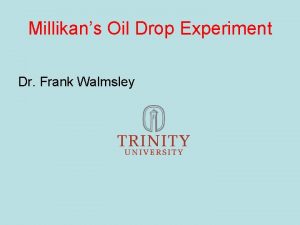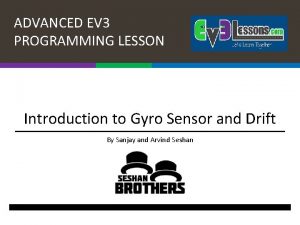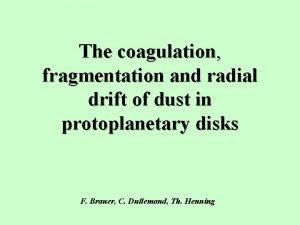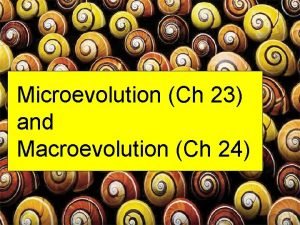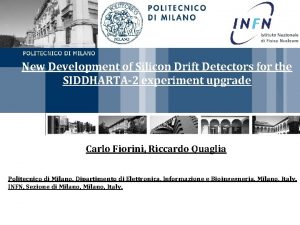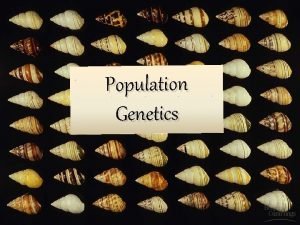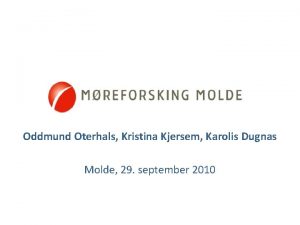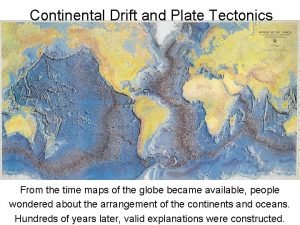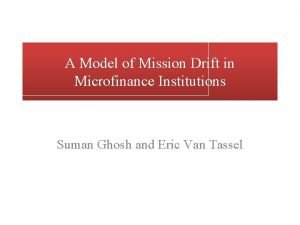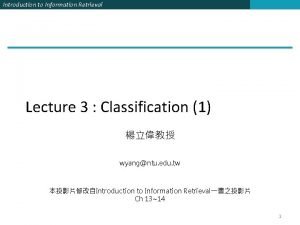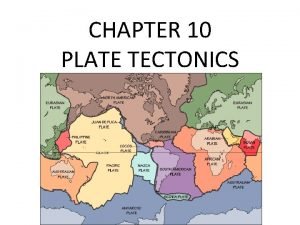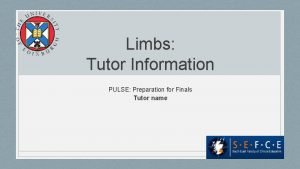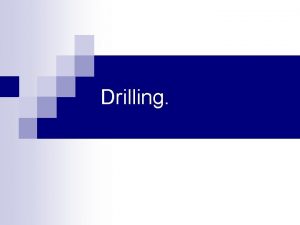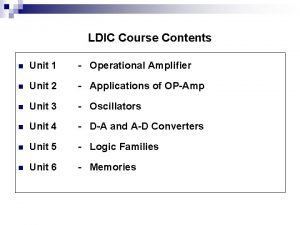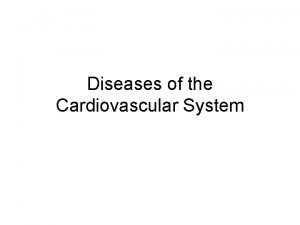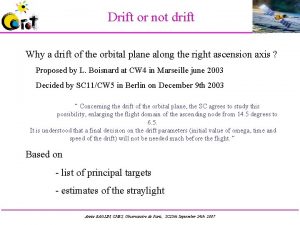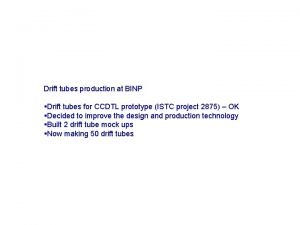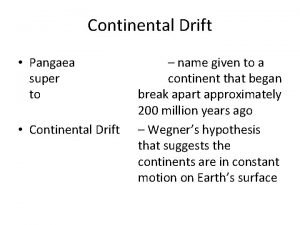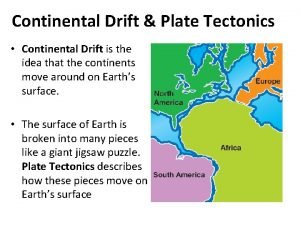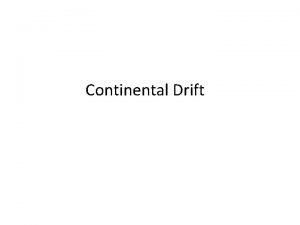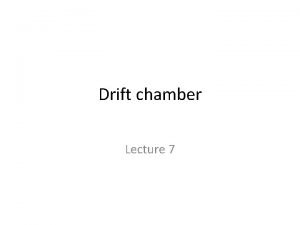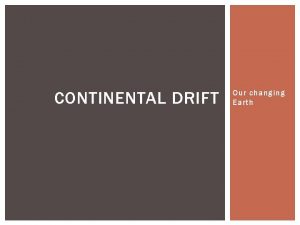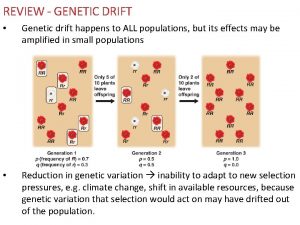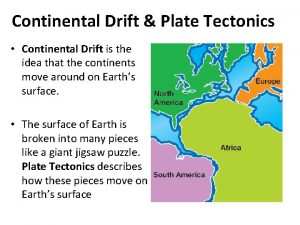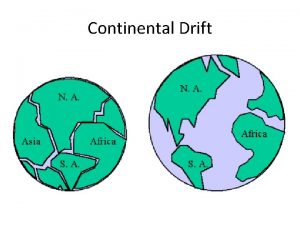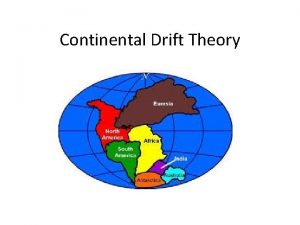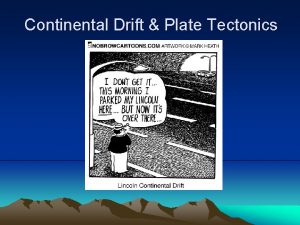The DRIFT experiment Recent results from the DRIFTIId














































- Slides: 46

The DRIFT experiment: Recent results from the DRIFT-IId detector James Battat Wellesley College [for the DRIFT collaboration] CYGNUS 2015 @ Oxy 2015 June 2 nd

Overview of talk • CS 2 as negative ion drift Martoff et al. NIMA, 400 (2000); Snowden-Ifft, Martoff, Burwell, PRD 61 10 (2000). • DRIFT’s successful quest to reduce backgrounds Currently operating background-free Snowden-Ifft, Rev. Sci. Instrum. 85 013303 (2014) [DRIFT collab. ] Battat et al. , JINST, 9 P 11004 (2014) [DRIFT collab. ] Battat et al. , NIMA 794 (2015) • 2014 SD-proton limit: 1 pb at 100 Ge. V/c 2. [DRIFT Collab. ], Battat et al. , ar. Xiv: 1410. 7821, submitted to Phys. of Dark Universe Steve Sadler, Ph. D Thesis Sheffield University, 2014 • Additional improvements give preliminary result of σSD-p~0. 3 pb 6/2/2015 James Battat, Wellesley College, CYGNUS 2015 1

Directional Recoil Identification From Tracks Occidental College Dan Snowden-Ifft - PI Jean-Luc Gauvreau Chuck Oravec Alex Lumnah Nick Waldram The University of Edinburgh Alex Murphy – PI 6/2/2015 Sheffield University Neil Spooner – PI Ed Daw – PI Matt Robinson Dan Walker Steve Sadler Andrew Scarff Anthony Ezeribe Frederic Mouton Trevor Gamble University of New Mexico Dinesh Loomba - PI Michael Gold – PI John Matthews - PI Eric Lee Eric Miller Nguyen Phan Randy Lafler Joshua Martin Wellesley College James Battat – PI University of Hawaii Sven Vahsen – PI Tom Thorpe James Battat, Wellesley College, CYGNUS 2015 Josh Murillo Colorado State University John Harton – PI Jeff Brack Dave Warner Alexei Dorofeev Fred Shuckman II Boulby Laboratory Sean Paling – PI Emma Meehan Louise Yeoman Chris Toth 2

DRIFT in Boulby: 2805 m. w. e. Operated by the UK’s Science & Technology Facilities Council (STFC) in partnership with the mine operators ICL Mei & Hime [astro-ph/0512125] For scope of work at Boulby, see talk by Chris Toth, Thursday 14: 30. 6/2/2015 James Battat, Wellesley College, CYGNUS 2015 3

Negative ion formation W IM P Nucle a Reco r il W e- -eee- e e-e Mean electron capture distance is a few hundred microns E-field Drift direction 6/2/2015 Martoff et al. , NIMA, 440 (2000) Snowden-Ifft, et al. , PRD, 61, 101301 (2000) Snowden-Ifft & Gauvreau, Rev. Sci. Instrum. , 84, James Battat, Wellesley College, 053304 (2013) CYGNUS 2015 4

Transport of CS 2 negative ions • Diffusion is ~ thermal (both transverse and longitudinal) low diffusion increases active volume per readout area • Drift speeds are ~5 cm/ms or ~20 us/mm Snowden-Ifft & Gauvreau, Rev. Sci. Instrum. , 84, 053304 (2013) James Battat, Wellesley College, [ar. Xiv: 1301. 7145 v 2] 6/2/2015 CYGNUS 2015 5

Negative ion gas mixtures • Ar: CH 4: CS 2, Xe: CS 2, CF 4: CS 2 , CF 4: O 2: CS 2… Martoff et al. , NIMA 440 (2000) Lightfoot et al. , Astropart. Phys. 27 (2007) • CS 2 is not the only negative ion gas Nitromethane (CH 3 NO 2) SF 6 6/2/2015 [Martoff et al. , NIMA 598 (2009)] [see Nguyen Phan’s talk Thr. , 13: 30] James Battat, Wellesley College, CYGNUS 2015 6

Some DRIFT detector nomenclature DRIFT-IId 0. 8 m 3 Demonstrated 2 pb sensitivity in 2012 Has since been upgraded and is currently running background-free (texturized thin-film cathode, and 3 D fiducialization) DRIFT-IIe 0. 8 m 3 engineering prototype for DRIFTIII Currently at Occidental College. D-HD DRIFT-HD 0. 25 m 3 high spatial-resolution (Proposed) DRIFT-III 24 m 3 (Proposed) 6/2/2015 James Battat, Wellesley College, CYGNUS 2015 7

DRIFT-IId geometry 900 Dimensions in mm Fiducial volume is 0. 8 m 3 6/2/2015 James Battat, Wellesley College, CYGNUS 2015 8 Image from Burgos et al. , NIMA 584 (2008)

DRIFT-IId geometry MWPC: 3 wire planes 1 cm gaps 552 wires 448 fid. 2 mm pitch z=0 Grid wires -2. 8 k. V 100 um diam. 900 Anode wires Grounded 20 um diameter 6/2/2015 z=50 cm Left MWPC James Battat, Wellesley College, CYGNUS 2015 Cathod e -32 k. V Right MWPC 9

DRIFT readout Heavy grouping, low channel count 100% spatial ambiguity (8 -wire = 16 mm periodicity) … 448 anode wires … 6/2/2015 Image from M. Pipe Ph. D Thesis, U. Sheffield, 2011 James Battat, Wellesley College, CYGNUS 2015 10

The War on Backgrounds • 2005: 500 evt/day • 2012: 130 evt/day (material selection) • 2014: 1 evt/day (0. 9 um thin-film cathode) • 2014: 0 evt/day (z-fiducialization) See talk by Eric Miller, Wed. , 13: 30 6/2/2015 James Battat, Wellesley College, CYGNUS 2015 11

z-fiducialization: differential drift speeds MWPC Drift direction 6/2/2015 James Battat, Wellesley College, CYGNUS 2015 Proportionality constant can be measured for various gas mixtures, or calibrated in-situ. 12

z-fiducialization: limitations Data from an R&D vessel, not DRIFT-IId Po 210 Snowden-Ifft, Rev. Sci. Instrum. 85 013303 (2014). 6/2/2015 James Battat, Wellesley College, CYGNUS 2015 13

DRIFT-IId: some numbers • CS 2: CF 4: O 2 30: 1 Torr • Mass of F: 40 g/0. 8 m 3 C: 18 g/0. 8 m 3 S: 96 g/0. 8 m 3 • 30 ke. Vr F recoil = 1 mm range • CS 2 - drift speed ~5 cm/ms. (10 ms for full 50 cm drift, 20 us/mm) • Gas gain ~1000 • Source-free running for 46. 3 live days Fe-55 calibrations every 6 hours Cf-252 neutron calibration 5 runs, 3. 2 live days 6/2/2015 James Battat, Wellesley College, CYGNUS 2015 14

Events in DRIFT • Any anode channel > 30 m. V triggers readout of all channels. • Raw trigger rate ~ 1 Hz • Adverse effect on Ethresh 50% efficiency at ~50 ke. Vr F • Improved trigger implemented 50% eff. at ~20 ke. Vr F RG = Right grid (1 – 8 and sum) RVG = Right veto (grid) RVA = Right veto (anode) RA = Right anode (1 – 8 and sum) 6/2/2015 James Battat, Wellesley College, CYGNUS 2015 15

Events in DRIFT Right MWPC, Anode #7 Line 6/2/2015 RG = Right grid RVG = Right veto (grid) RVA = Right veto (anode) RA = Right Wellesley anode James Battat, College, CYGNUS 2015 16

Data processing Raw triggers Noise filtering, undershoot removal, saturation cut Signal conditionin g Stage I cuts Bkg rejection E recon z recon 6/2/2015 James Battat, Wellesley College, CYGNUS 2015 17

Data processing Raw triggers Signal conditionin g Stage I cuts • • • xy-fiducialization (veto above threshold) Temporal ROI cut (+/- 700 us) Cathode-crossing events (hits in both TPCs) Multiples (non-contiguous hits) Maximum range (all 8 anode channels Ry >16 mm) • Impulse charge deposition (risetime < 3 us) Bkg rejection E recon z recon 6/2/2015 James Battat, Wellesley College, CYGNUS 2015 18

Data processing Raw triggers Signal conditionin g • Ratio of ionization in Min. Car. region to total ROI • Require comparable ionization on anodes and grid Stage I cuts Bkg rejection E recon z recon 6/2/2015 James Battat, Wellesley College, CYGNUS 2015 19

Data processing Raw triggers Signal conditionin g Stage I cuts Bkg rejection • Compute event energy in m. V*us Sum up waveform integrals for all anode channels above an analysis threshold (9 m. V). • Convert to ke. Vee (equivalently NIPs) m. V*us to ke. Vee via 55 Fe calibration (every 6 h, stable to 4%) ke. Vee to NIPs via W=25. 2 e. V * • Convert to ke. Vr Use [Hitachi 2008] prediction. For CS 2: CF 4 quenching measurements, see talks by Eric Miller (Wed. , 13: 30) and Alex Lumnah (Thr. , 14: 00) E recon z recon * W not yet measured for CS 2: CF 4: O 2 mixture, but expect ~1% change from CS 2: CF 4, which has been measured [P&S 2009]. [Hitachi 2008] Hitachi, Radiat. Phys. Chem. 77 (10– 12) (2008) [P&S 2009] Pushkin & Snowden-Ifft, NIMA 606 (2009) 6/2/2015 James Battat, Wellesley College, CYGNUS 2015 20

Data processing Require 3 peaks, evenly spaced Raw triggers Signal conditionin g Stage I cuts Bkg rejection E recon z recon dt ~ 150 us (S to I) Z ~ (0. 24 cm/us)*dt ~ 36 cm I peak width is ~ 50 us, so z-recon gets hard below z ~10 cm. 6/2/2015 James Battat, Wellesley College, CYGNUS 2015 21

Cathode RPR/LEAs 6/2/2015 James Battat, Wellesley College, CYGNUS 2015 22

Detection efficiency post-Stage I 50% at ~50 ke. V 50% at ~20 ke. V 6/2/2015 James Battat, Wellesley College, CYGNUS 2015 23

Nuclear Recoil Detection Efficiency Map 6/2/2015 James Battat, Wellesley College, CYGNUS 2015 24

DRIFT’s 2015 SD-proton limit DMTPC (2011) NEWAGE (2015) DRIFT (2012) DRIFT (2015) PICO (2015) 6/2/2015 James Battat, Wellesley College, CYGNUS 2015 25

Room for improvement • Improved trigger to capture lower energy events Factor of ~2 in threshold • Improve efficiency at high-z z-reconstruction does not rely on S-peak • Gas circulation to maintain O 2 partial pressure Minority peak ionization is strongly O 2 dependent. • Can we do better at low z (z<10 cm)? • Will new backgrounds appear? 6/2/2015 James Battat, Wellesley College, CYGNUS 2015 26

Efficiency Map (prelim. ) 6/2/2015 James Battat, Wellesley College, CYGNUS 2015 27

Preliminary analysis shows 0. 3 pb y r a n i m i l e r P DRIFT (2015 b, preliminary) 6/2/2015 James Battat, Wellesley College, CYGNUS 2015 28

Events passing cuts 6/2/2015 James Battat, Wellesley College, CYGNUS 2015 29

Summary • A 1 pb limit is on the ar. Xiv: 1410. 7821 • Since then, upgrades to the detector and analysis have improved the reach by another factor of ~3 to give σSD-p~ 0. 3 pb • Have ~65 live-days in-hand (and counting). 6/2/2015 James Battat, Wellesley College, CYGNUS 2015 30

END

Quenching 6/2/2015 James Battat, Wellesley College, CYGNUS 2015 32

6/2/2015 James Battat, Wellesley College, CYGNUS 2015 33

DAQ has a high-pass filter • To get rid of 50 Hz mains noise. (1/50 Hz = 20 ms = 20000 us) • For C=2200 p. F, R=50 Ohm, tau=RC= 0. 1 us • (see M. Pipe’s thesis, page 61). 6/2/2015 James Battat, Wellesley College, CYGNUS 2015 34

Waveform conditioning • Frequency filtering – 55 k. Hz noise notch filter (HV supply) – 50 Hz line noise (subtract sine fit) • Undershoot correction – Shaping electronics (4 us shaping time) cause undershoot • Analysis threshold is 9 m. V (trigger threshold was 30 m. V). What is waveform baseline RMS? 6/2/2015 James Battat, Wellesley College, CYGNUS 2015 35

DRIFT readout 1 … 6/2/2015 Anode wires 9 17 25 James Battat, Wellesley College, CYGNUS 2015 36

MWPC 3 planes 1 cm gaps Grid 512 wires 100 um diameter Anode 512 wires 20 um diameter 6/2/2015 James Battat, Wellesley College, CYGNUS 2015 37

Passes cuts on: • xy fiducialization • Risetime • Multiples Fails cut because: • Cathode-crossing • Range too long (all anode lines hit • ROI cut 6/2/2015 James Battat, Wellesley College, CYGNUS 2015 • RATE OF ALPHAS? ? ? 38

Background rejection Spark cut Ratio of ionization in minority carriers region to total ROI ionization “Ringer” cut Require comparable ionization on anodes and grid 6/2/2015 James Battat, Wellesley College, CYGNUS 2015 39

Stage I cuts • • • xy-fiducialization (veto above threshold) Temporal ROI cut (+/- 700 us) Cathode-crossing events (hits in both TPCs) Multiples (non-contiguous hits) Maximum range (all 8 anode channels Ry >16 mm) • Impulse charge deposition (risetime < 3 us) 6/2/2015 James Battat, Wellesley College, CYGNUS 2015 40

Energy reconstruction • Compute event energy in m. V*us Sum up waveform integrals for all anode channels above an analysis threshold (9 m. V). • Convert to NIPs (equivalently ke. Vee) Calibration constant derived from frequent 55 Fe calibrations studies – stable to ~4% over experiment. Also: W=25. 2 e. V * • Convert to ke. Vr Use [Hitachi 2008] prediction. For CS 2: CF 4 quenching measurements, see talks by Dinesh Loomba (DAY, TIME) and Alex Lumnah (DAY, TIME) * W not yet measured for CS 2: CF 4: O 2 mixture, but expect ~1% change from CS 2: CF 4, which has been measured [P&S 2009] [Hitch 2008] 6/2/2015 Pushkin & Snowden-Ifft, NIMA 606, 2009 Hitachi, Radiat. Phys. Chem. 77 (10– 12) (2008) James Battat, Wellesley College, CYGNUS 2015 41

Transport of CS 2 negative ions • Diffusion is ~ thermal (both transverse and longitudinal) • Drift speeds are ~5 cm/ms aka ~20 us/mm “low-field” approximation hold even at 580 V/cm Snowden-Ifft & Gauvreau, Rev. Sci. Instrum. , 84, 053304 (2013) James Battat, Wellesley College, [ar. Xiv: 1301. 7145 v 2] 6/2/2015 CYGNUS 2015 42

DRIFT-IId geometry MWPC 3 planes 1 cm gaps Grid 552 wires, 448 fid. 2 mm pitch 100 um diameter 900 Anode 552 wires, 448 fid. 2 mm pitch 20 um diameter z=0 6/2/2015 James Battat, Wellesley College, CYGNUS 2015 z=50 cm z=0 43

TO DO • • Dates for new limit run (July to October 2014) Verify gas gain = 1000 Why is 55 -day efficiency so high at z~50 cm? (used to be 10 -30%, is now 25 -90%)? Capacitance of ONE anode wire? Cap. when grouping 56 of them into one preamp? • • Rates of events that get cut? ? ? What is alpha rate? ~1/4 Hz. • Why are so many anode wires needed for the veto? (43 on each side, plus 9 guard wires on each side). What is new triggering scheme (integral? ) 18 us boxcar averaging for trigger. New threshold is 15 m. V. 50% at 500 NIPs Validation that waveform filtering (notch filter, 50 Hz, undershoot removal) preserve event quantities like energy, head tail, etc. ? Why integrate waveforms (vs. take amplitude) for NIPs? Isn’t it already integrated by electronics? Check collaboration slide Fix “Boulby Mine” slide. Fe 55 252 e- • • • 6/2/2015 James Battat, Wellesley College, CYGNUS 2015 44

Events passing cuts 6/2/2015 James Battat, Wellesley College, CYGNUS 2015 45
 A friend emails you the results
A friend emails you the results Frank walmsley
Frank walmsley Hypothesis of paper airplanes
Hypothesis of paper airplanes Electron diffraction experiment results
Electron diffraction experiment results Asch conformity experiment results
Asch conformity experiment results Which brand of chocolate melts the fastest in the sun
Which brand of chocolate melts the fastest in the sun Current trends in project management
Current trends in project management Recent advances in ceramics
Recent advances in ceramics Ap synthesis prompt
Ap synthesis prompt Mis trends
Mis trends Recent demographic changes in the uk
Recent demographic changes in the uk Recent trends in ic engine
Recent trends in ic engine News passive voice
News passive voice Explain recent trends in india's foreign trade
Explain recent trends in india's foreign trade Https drive google com drive u 0 recent
Https drive google com drive u 0 recent Biotaphonomy
Biotaphonomy Myips online
Myips online Recent developments in ict
Recent developments in ict Http drive google com
Http drive google com Skimming and scanning in reading comprehension
Skimming and scanning in reading comprehension After a skydiving accident laurie
After a skydiving accident laurie Recent developments in object detection
Recent developments in object detection Recent amendments in companies act
Recent amendments in companies act What will we do if we use hardware solution for gyro drift
What will we do if we use hardware solution for gyro drift Radial drift
Radial drift Drift current and diffusion current in semiconductor
Drift current and diffusion current in semiconductor Kesler science continental drift theory
Kesler science continental drift theory When a driver's awareness and focus drift from
When a driver's awareness and focus drift from Genetic drift
Genetic drift Silicon drift detector explained
Silicon drift detector explained Divergent evolution
Divergent evolution Therapeutic drift
Therapeutic drift Requirements for natural selection
Requirements for natural selection Drift current and diffusion current in semiconductor
Drift current and diffusion current in semiconductor Aker p drift klage
Aker p drift klage Genetic drift example
Genetic drift example Continetial drift
Continetial drift Define antigenic drift
Define antigenic drift Mission drift definition
Mission drift definition Proof of continental drift theory
Proof of continental drift theory Concept drift example
Concept drift example What is gene flow and genetic drift
What is gene flow and genetic drift Chapter 10 plate tectonics
Chapter 10 plate tectonics Anhydrosi
Anhydrosi Drilling drift
Drilling drift Difference between inverting and non inverting amplifier
Difference between inverting and non inverting amplifier Pronator drift
Pronator drift

